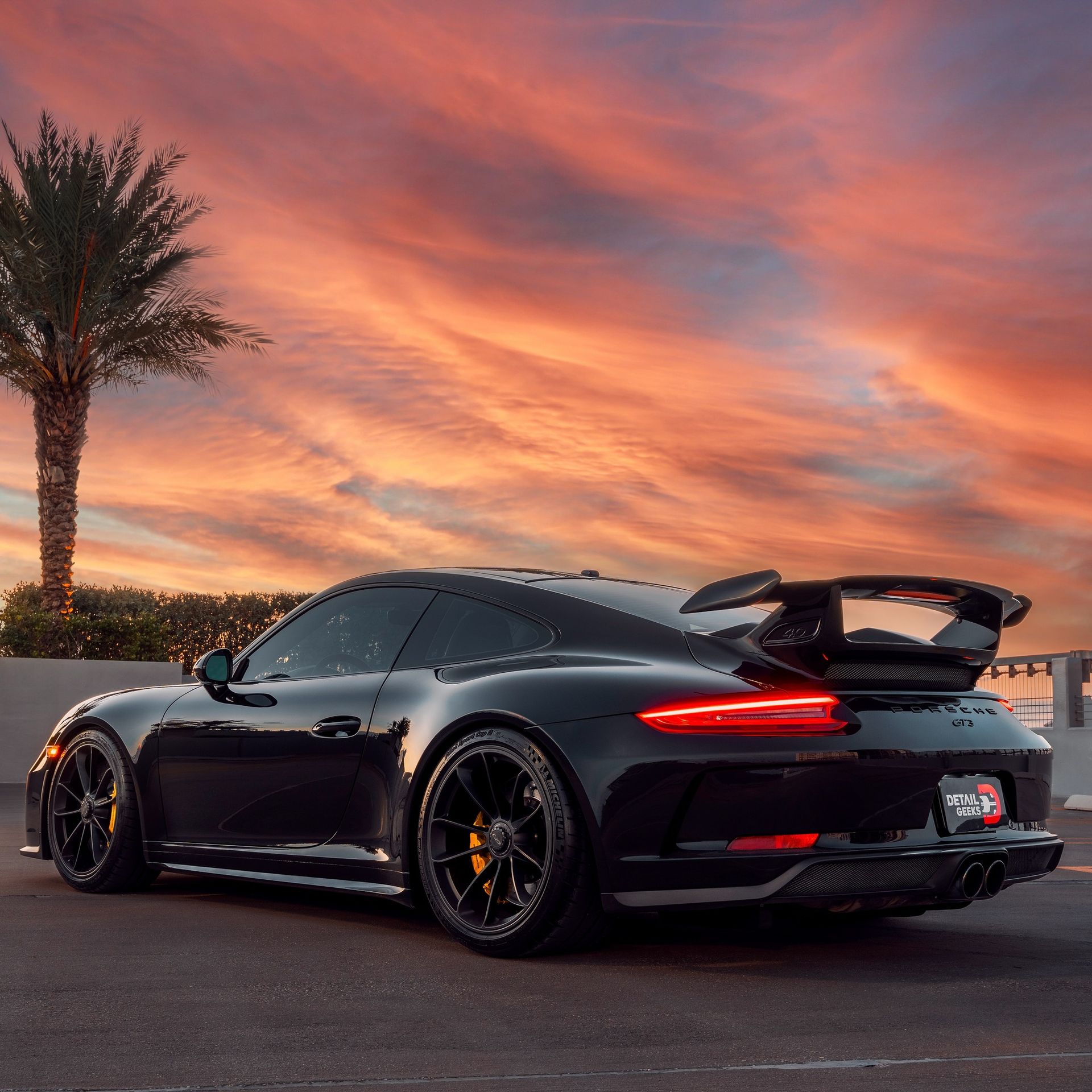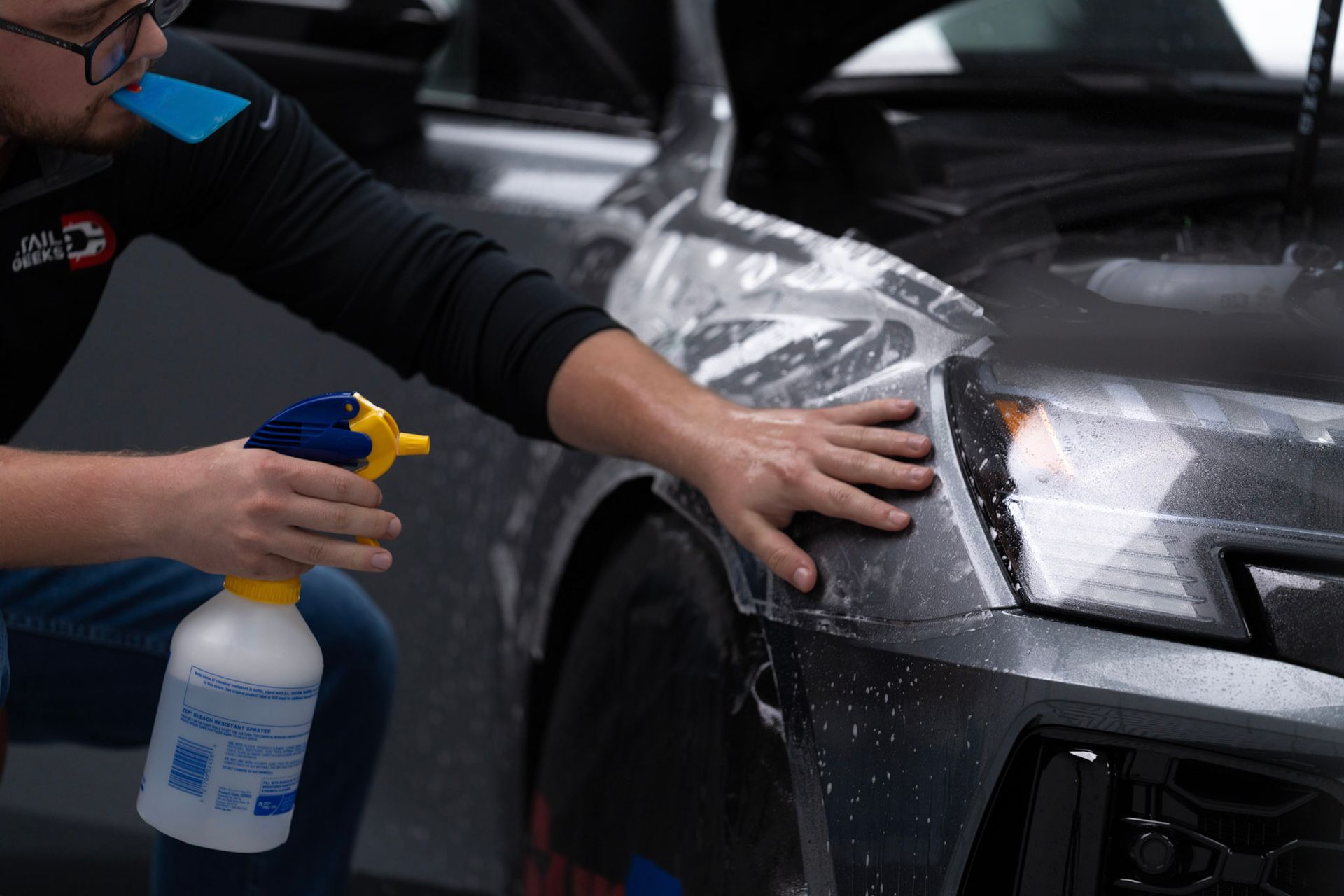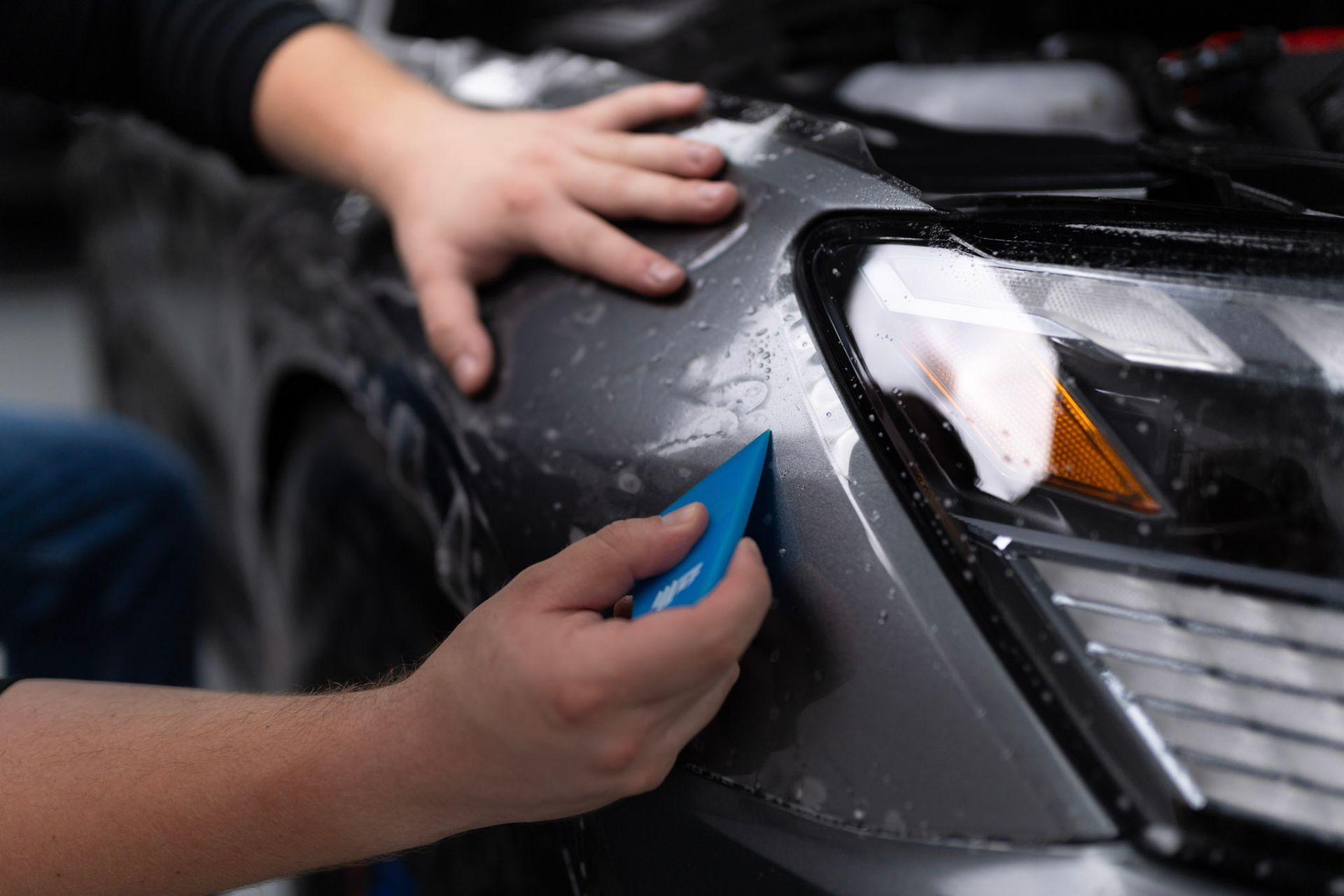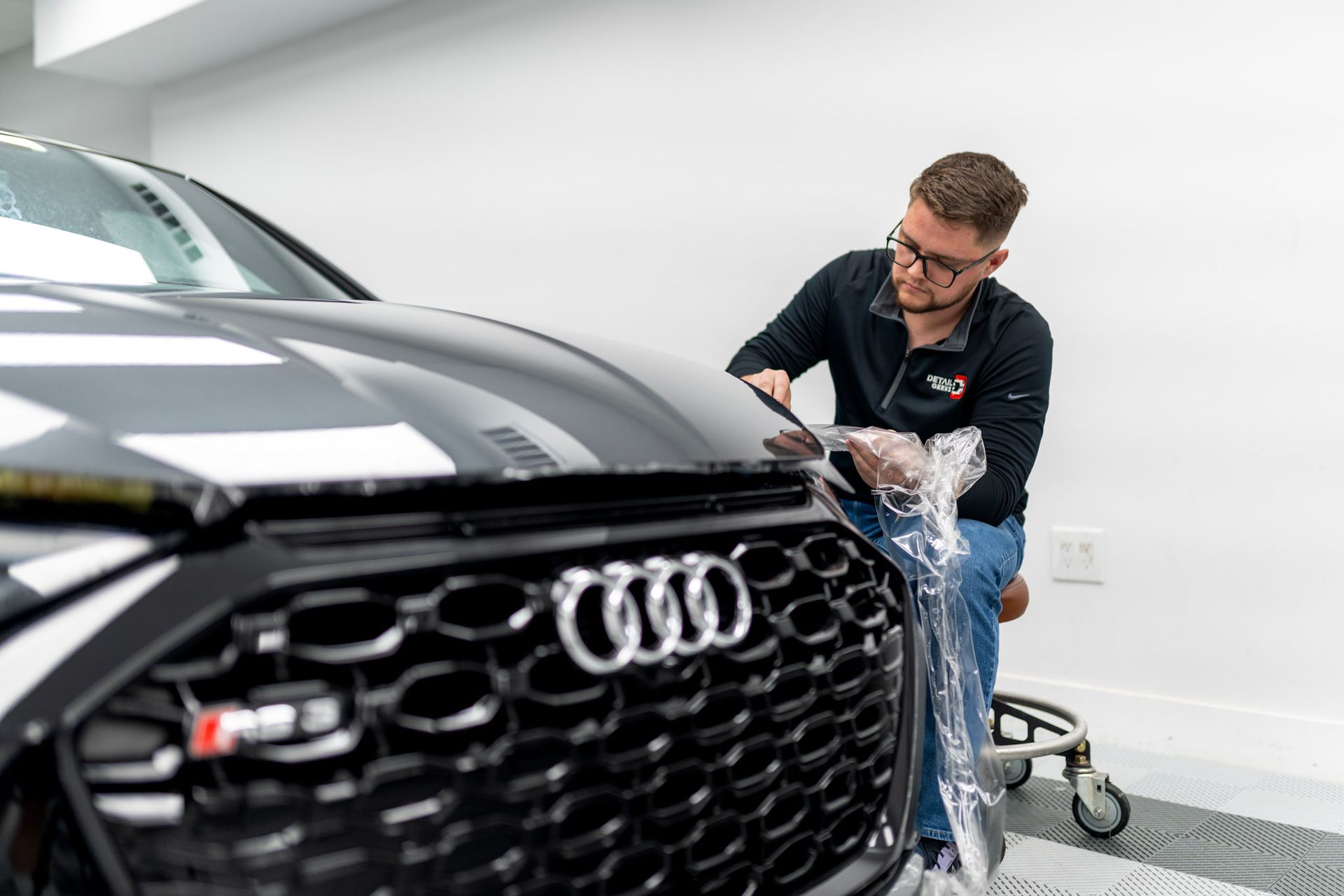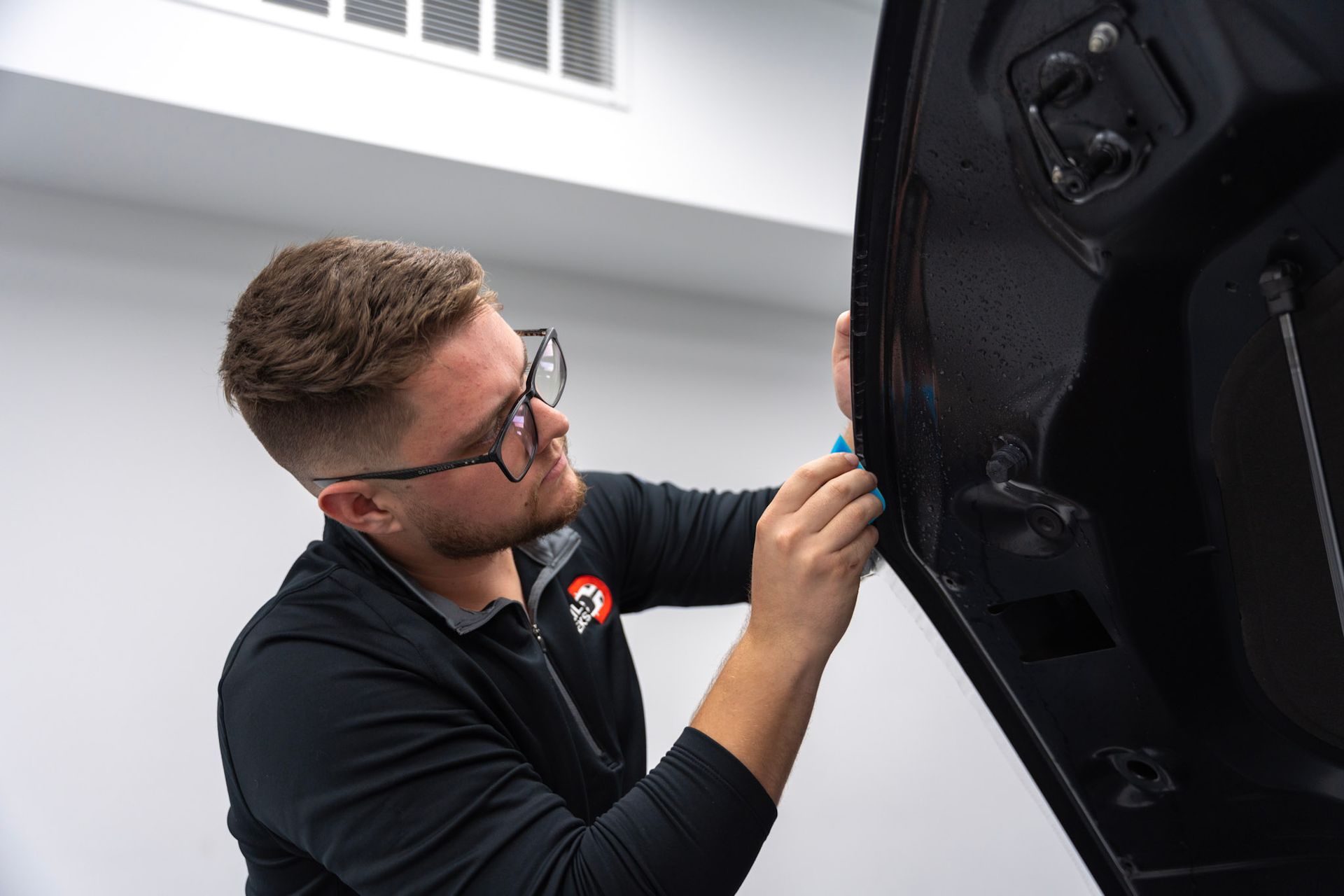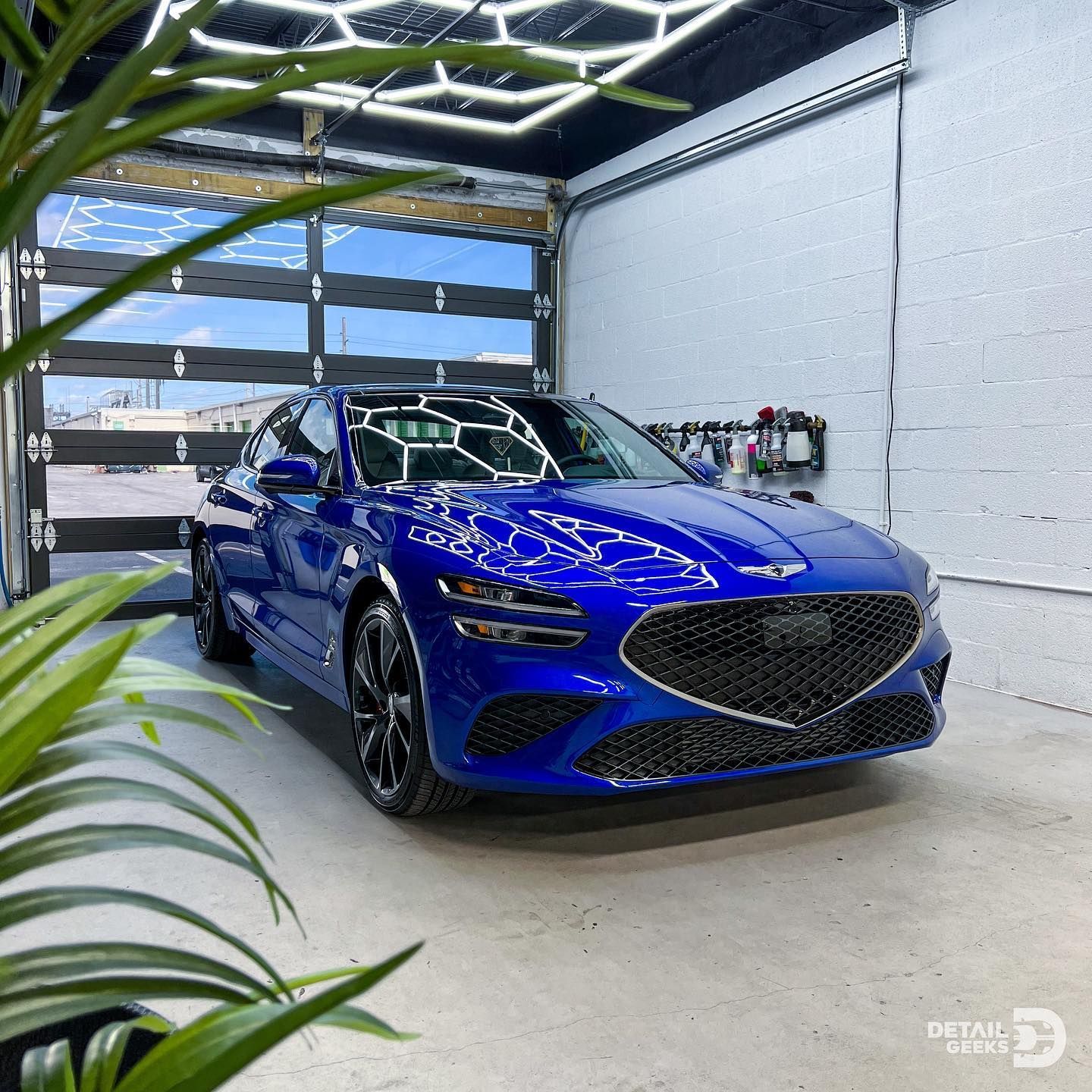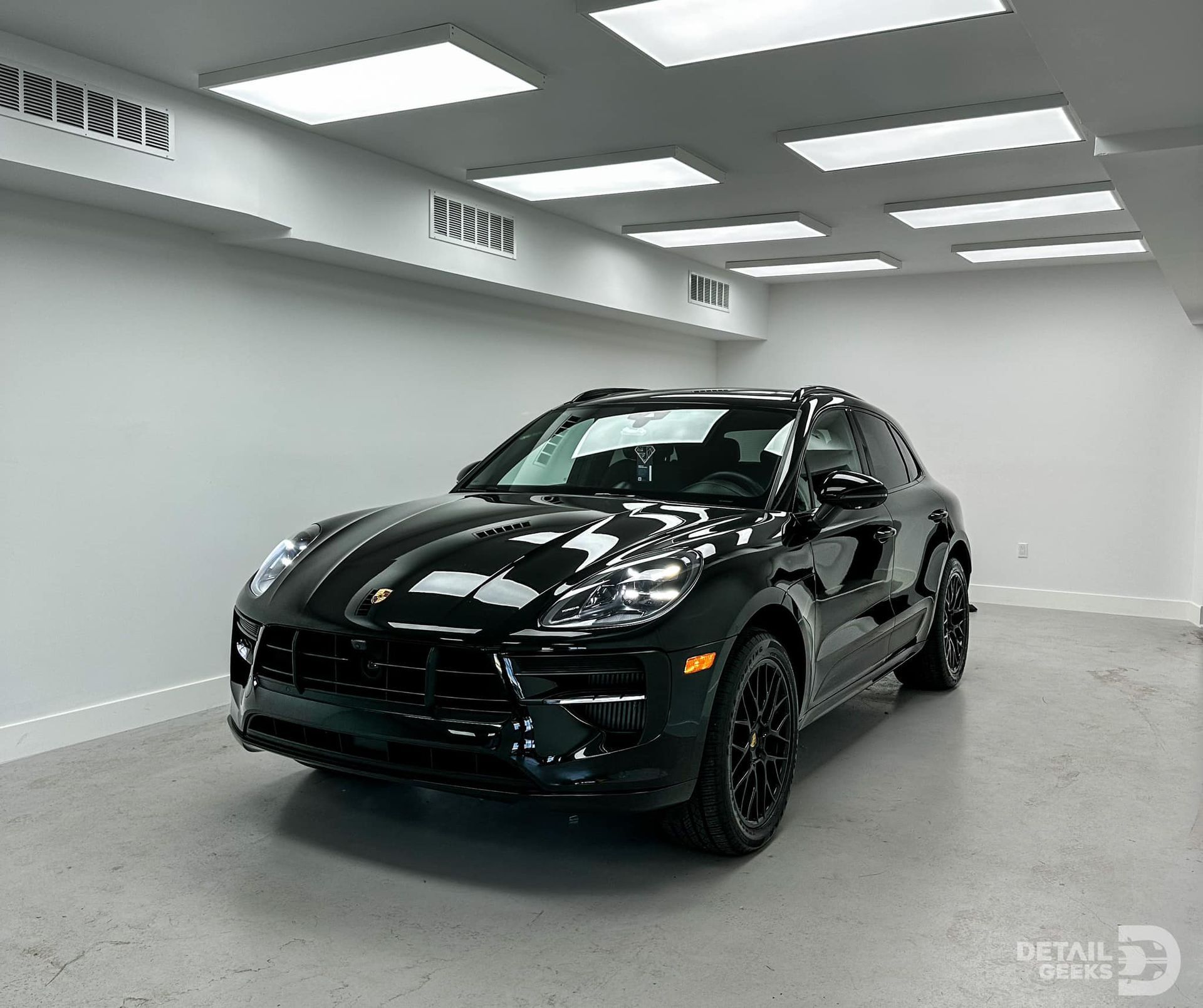The Complete Guide to PPF: Expert Tips and Tricks Included
When it comes to preserving the flawless appearance of your vehicle, paint protection film stands out as a top choice. In this complete guide, we'll explore everything you need to know about PPF, from its remarkable benefits to the step-by-step installation process. Plus, we’ve included expert tips and tricks to help you get the most out of your investment, ensuring your car stays protected and looks its best for years to come.
Detail Geeks covers everything from the benefits of paint protection film, different types of films available in the market, installation tips, and maintenance best practices. It provides a complete understanding of paint protection film and serves as a valuable reference for both car enthusiasts and professionals looking to protect vehicle paint surfaces.
What Is a Paint Protection Film?
PPF, or paint protection film, is a clear, thermoplastic urethane film that shields the paintwork of automobiles from scratches, chips, and other types of damage. This protective barrier was originally developed to safeguard helicopter blades and has since undergone remarkable advancements. The evolution of paint protection films has been truly remarkable. Modern paint protection film boasts numerous features and benefits highly sought after by car owners. One of its most impressive characteristics is its self-healing properties. This means that minor scratches and swirls on the film can disappear through heat application, leaving the film looking pristine once again—essentially a magic eraser for your car!
Characteristics of Modern Paint Protection Film:
- Self-healing: The ability to repair itself from light scratches and marks.
- Resistance: Its capability to withstand stones, chips, scratches, and other types of damage.
- Protection: Provides a protective barrier against UV rays, fading, chemical stains, and contaminants.
- Different Finishes: PPF is available in various finishes, such as glossy, matte, satin, and clear, to suit different aesthetic preferences.
Due to the complexity of applying a paint protection film to a vehicle's surface and the precision required for seamless installation, it is typically recommended to have it installed by professionals specializing in this craft. Their expertise ensures that the film is accurately positioned and adhered to the car's contours without any imperfections.
Benefits of Paint Protection Film
When you invest in a paint protection film for your car, you aren't just ensuring that the vehicle looks good; you're also taking significant steps to protect it from physical damage. Let's dive into some of the top advantages of paint protection film to understand its benefits for your vehicle.
First and foremost, a paint protection film provides exemplary protection against physical damage. It acts as a formidable barrier against minor abrasions, stone chips, and bug splatters. Consider your car driving down a highway; tiny debris kicks up from the road and hits the front end. Without a paint protection film, these small particles would chip away at your car's paint over time, leaving unsightly marks and potentially leading to corrosion. But with a high-quality paint protection film installed, the film takes the hit, keeping your car's paint intact and looking brand new for longer.
In addition to physical damage protection, UV radiation resistance is another key benefit offered by PPF. The film shields your car's paint from harmful UV rays, which are notorious for causing fading and discoloration over time. With paint protection film in place, your car's paint retains its vibrant color and shine, ensuring that it looks as good as new for years to come. Some types of paint protection film also come with self-healing properties, meaning that they have the remarkable ability to fix small scratches and swirls when exposed to heat, such as sunlight or warm water. This feature can save you from the frustration of noticing minor imperfections on your car's surface and having to resort to costly repair solutions.
Consider having self-healing PPF installed on the hood of your car. After a day out on the road, you notice a few light scratches caused by flying debris. Over time, when exposed to heat (or even just the warmth of your garage), these scratches miraculously disappear, leaving your car looking flawless without any intervention needed. Paint protection films are also highly resistant to chemical stains from bird droppings, tree sap, road salt, and other harsh substances that your car may encounter on the road. This level of protection ensures that your car's paint stays pristine and free from unsightly blemishes caused by environmental factors.
Different Types of PPF
When it comes to paint protection film, there isn't a "one-size-fits-all" option. Your choice of PPF should align with your specific desires, whether you prioritize glossiness, durability, or a unique aesthetic for your vehicle. Here are types of paint protection films commonly available:
- Glossy Finish PPF: Do you want your car to glisten and sparkle like it just rolled out of a showroom? A glossy finish film is designed specifically to do that. It gives your vehicle an extra shine, making it appear freshly polished even after years of use. This type of film is ideal for individuals who want that sleek, "straight-out-of-the-waxing-bay" look for their car.
- Matte Finish PPF: Some people prefer their vehicles to exude a more understated vibe. Matte finish paint protection films provide a unique non-reflective finish that sets it apart from the conventional glossy appearance. If you’re into a more subtle but still striking look for your car, matte finish paint protection film might just be what you are looking for.
- Clear PPF: For those who want comprehensive protection without altering the original appearance of their vehicle's paint, clear paint protection film is the go-to choice. It acts as an invisible bodyguard for your car, shielding it from scratches, chips, and other damage without changing how it looks.
Choosing the right type of paint protection film can make a significant difference in not only how your vehicle looks but also how well it holds up against wear and tear over time. Each type has its own unique benefits and appeal, catering to different tastes and requirements people have for their cars.
Expert Tips for Applying PPF
Applying paint protection film can be daunting, but with the right approach and some pro tips, it becomes much more manageable. The key to successful paint protection film installation lies in meticulous preparation and careful execution. Now, let's dive into some expert advice that will help you achieve a seamless and professional-looking result.
- Preparation is Key: When applying paint protection film, preparation is absolutely crucial. Before beginning the application process, thoroughly clean your car to ensure no dust, dirt, or grease particles are on the surface. Impurities can cause imperfections under the film, affecting its adhesion and appearance. Utilizing a clay bar can be particularly useful for removing embedded particles and achieving a smooth, clean surface for the PPF application. Moreover, preparing the surface by using a cleaning solution specifically designed for automotive surfaces ensures that no residual contaminants are left behind. This careful attention to detail during the prep stage sets the foundation for a flawless finish and long-lasting protection.
- Controlled Environment: The environment in which you perform the installation plays a critical role in ensuring the success of your paint protection film application. It's highly recommended to work in a clean, dust-free area to prevent any foreign particles from getting trapped under the film during installation. Even tiny particles can create imperfections and bubbles, compromising the overall quality of the protective film. Creating a controlled environment involves taking measures to minimize airborne particles and maintaining optimal humidity levels. By working in an environment free from dust and other contaminants, you significantly reduce the risk of blemishes and imperfections in the finished result.
- Use Slip Solution Generously: One of the secrets to achieving an accurate and smooth application of paint protection film is the generous use of a slip solution, which is typically a mixture of water and soap. This solution helps position the paint protection film accurately before final placement on the vehicle's surface. By generously spraying the slip solution before laying down the film, you enhance your ability to adjust its position without premature adhesion. Imagine the slip solution as a magic potion that allows you to fine-tune the positioning of the film before it gets locked in place. This step serves as a safeguard against misalignment and promotes better adhesion without forming wrinkles or air pockets.
- Squeegee Technique: A critical aspect of paint protection film application involves using a squeegee to remove water and air bubbles trapped underneath the film. When employing this technique, start from the center of the applied area and work outward systematically. By gradually pushing out any trapped air or excess liquid, you ensure that the film adheres uniformly to the vehicle's surface. Think of it as smoothing out adhesive tape on paper—starting from the center minimizes creases and ensures even adherence across its entire length.
- Heat Gun: In situations where the paint protection film needs to conform to complex curves or edges, a heat gun becomes an invaluable tool in your arsenal. Through gentle application of heat, you can stretch the film around challenging contours, allowing it to seamlessly adhere while maintaining its integrity. When using a heat gun, it's essential to exercise caution and avoid overheating the film, which could lead to damage if not used properly. By applying just enough heat with controlled movements, you can achieve optimal results without risking harm to the paint protection film or underlying vehicle surfaces.
By implementing these expert tips and techniques, you'll be better equipped to navigate through each stage of the PPF application with confidence and precision. These insights directly contribute to elevating your proficiency in handling this specialized protective material effectively.
Maintaining Your Paint Protection Film
You've invested in paint protection film to keep your car looking pristine for as long as possible, and now it's vital to maintain it properly. Regular maintenance ensures the film stays in excellent condition, providing optimal protection for your vehicle's paintwork. Here are some crucial tips and routines to follow in maintaining your paint protection film.
Regular Cleaning
Regular cleaning is essential to keep your paint protection film looking great and performing effectively. Contaminants like dirt, dust, and bird droppings can damage the film over time. Use a pH-balanced car shampoo, a soft wash mitt, and a microfiber cloth to wash your car routinely. Gently remove any stuck-on debris. without resorting to harsh scrubbing, that could potentially scratch the film. A complete and regular cleaning routine greatly contributes to preserving the visual appeal and protective qualities of your PPF.
Avoid Harsh Chemicals
When cleaning your car or paint protection film-covered areas, it's crucial to use gentle products free from strong solvents and abrasive cleaners. These chemicals can deteriorate the paint protection film, diminishing its protective capabilities and compromising its appearance. Stick to mild and non-abrasive cleaning solutions to maintain the integrity of the film.
Inspect Periodically
Regular inspections play a critical role in identifying any potential issues with your PPF. After long drives or exposure to harsh weather conditions, take the time to inspect the film for any lifting edges or signs of damage. Promptly addressing minor issues ensures that they don't develop into more significant problems that might compromise the effectiveness of the paint protection film. By closely monitoring the condition of your film, you can take proactive measures to rectify any defects before they escalate, maintaining the optimal functionality of the film throughout its lifespan.
By adhering to these maintenance strategies, you will undoubtedly prolong the life of your paint protection film, allowing you to enjoy long-lasting protection for your vehicle's paintwork while preserving its visual allure.
Top-Notch PPF Installers in Fort Lauderdale, FL
Protect your investment with Detail Geeks, the leading experts in superior paint protection film installation in Fort Lauderdale, FL. Our skilled technicians use top-of-the-line materials to safeguard your vehicle's paint from damage, ensuring it stays pristine and glossy. Don't wait until it's too late—contact us today to schedule an appointment and experience unparalleled care for your car's finish. Drive with confidence knowing your vehicle is shielded by the best in the business. Call us at (305) 896-2430 to get started!
Detail Geeks Blog
